Imperial Treasures of Saint Petersburg
Discover the grandeur of Saint Petersburg on this free walking tour, exploring its majestic landmarks and rich history with every step you take.
Time
3 Hours
Stops
9 Places
Distance
5.6 km
Palace Square (Dvortsovaya Ploshchad)
Begin your exploration at the heart of Saint Petersburg, where the iconic Winter Palace and the Alexander Column dominate this historic square, a symbol of Russian imperial power.
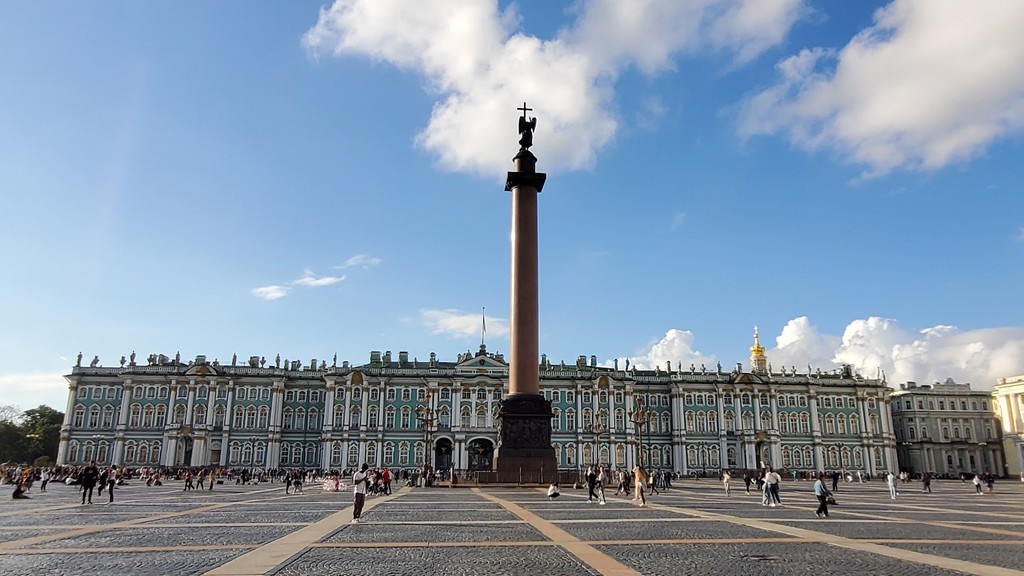
Palace Square (Dvortsovaya Ploshchad) (Source: Google Maps)
Palace Square, the centerpiece of Saint Petersburg, is a grand expanse dominated by the Winter Palace and the towering Alexander Column. This historic square has been the site of numerous significant events in Russian history, including revolutions and celebrations. The Winter Palace, an architectural marvel, served as the residence of the Russian tsars and now houses the State Hermitage Museum, one of the largest and most esteemed art museums in the world. The Alexander Column, erected in honor of Emperor Alexander I, stands as a testament to the city’s imperial past and is a striking example of Russian Empire architecture.
Admiralty Building
Walk towards the Admiralty Building, a striking example of Russian Empire architecture and a testament to Saint Petersburg's naval heritage.
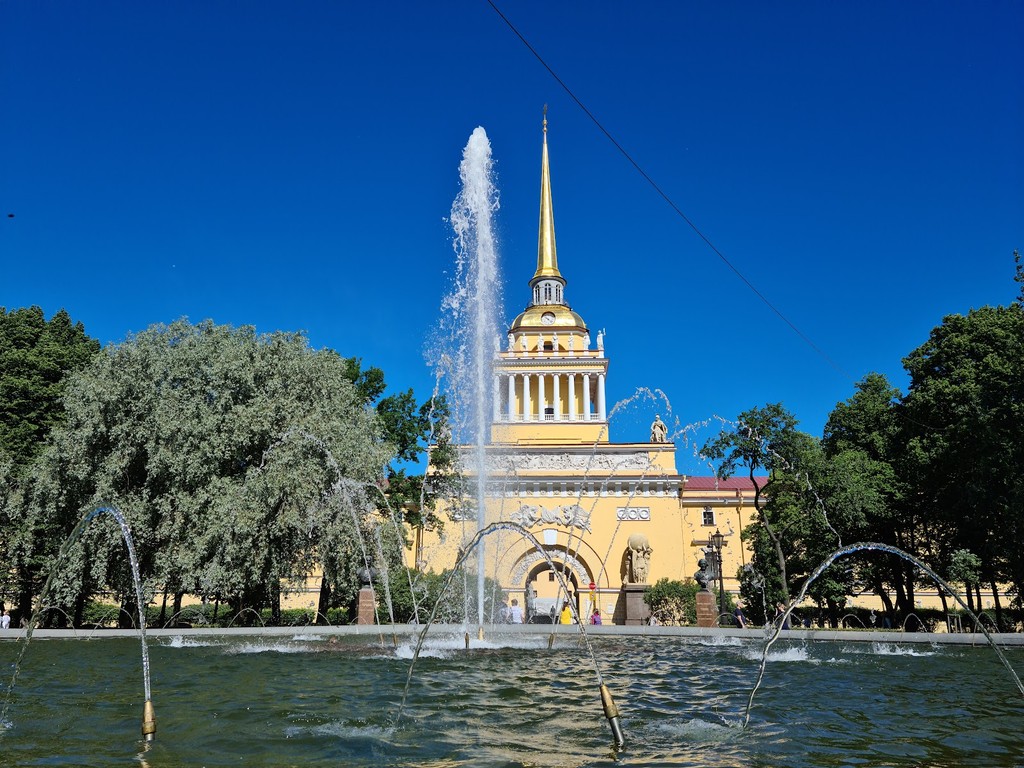
Admiralty Building (Source: Google Maps)
The Admiralty Building, an iconic structure in Saint Petersburg, exemplifies the grandeur of Russian Empire architecture. Originally constructed in the early 18th century, it served as the headquarters of the Russian Navy and is renowned for its distinctive golden spire that rises majestically above the city. The building's neoclassical design, with its intricate detailing and commanding presence, reflects the naval heritage of Saint Petersburg. Over the years, the Admiralty has undergone various renovations, yet it retains its historical significance as a symbol of maritime power and the city’s strategic importance.
Bronze Horseman
Stroll to the Bronze Horseman, an iconic equestrian statue of Peter the Great, symbolizing the city's founding and its enduring spirit.
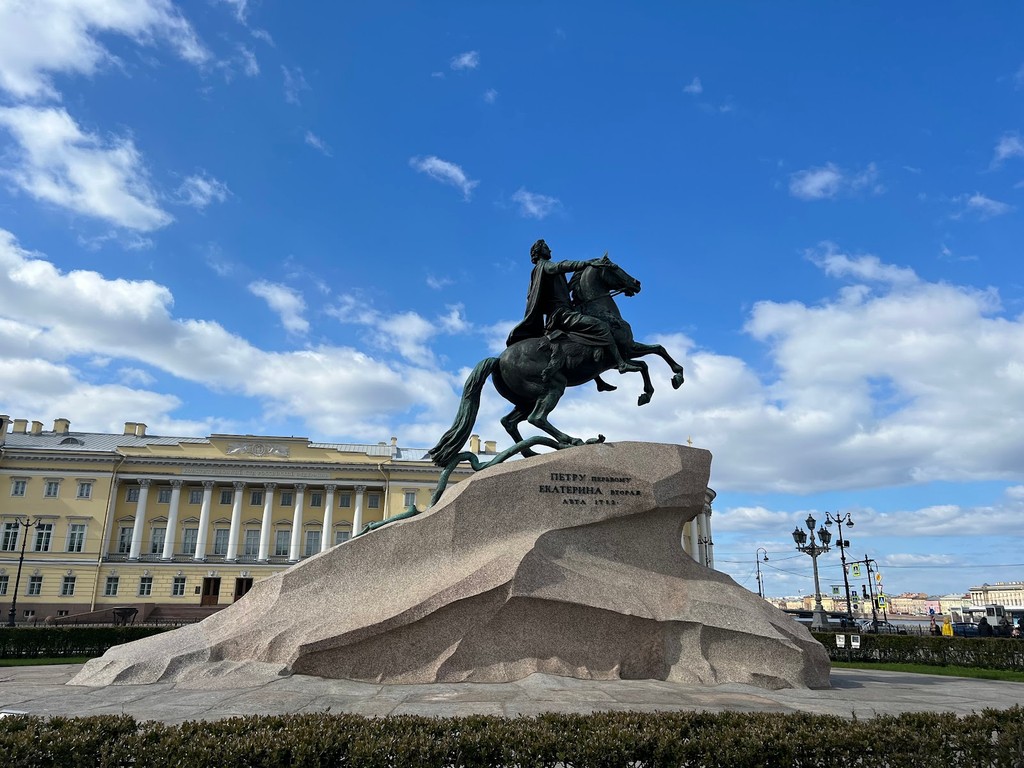
Bronze Horseman (Source: Google Maps)
The Bronze Horseman is an iconic equestrian statue of Peter the Great, symbolizing the founding of Saint Petersburg and the indomitable spirit of the city. Created by the French sculptor Étienne Maurice Falconet, this monumental statue was unveiled in 1782 and is set upon a massive granite pedestal known as the Thunder Stone, which is famous for its size and the challenge it posed during its transportation. The statue not only commemorates Peter's vision for a modern Russia but also represents the resilience of the city, having survived numerous historical upheavals, including wars and revolutions.
Senate Square (Decembrists' Square)
Visit Senate Square, adjacent to the Bronze Horseman, known for its historic significance and as a gathering place for political events.
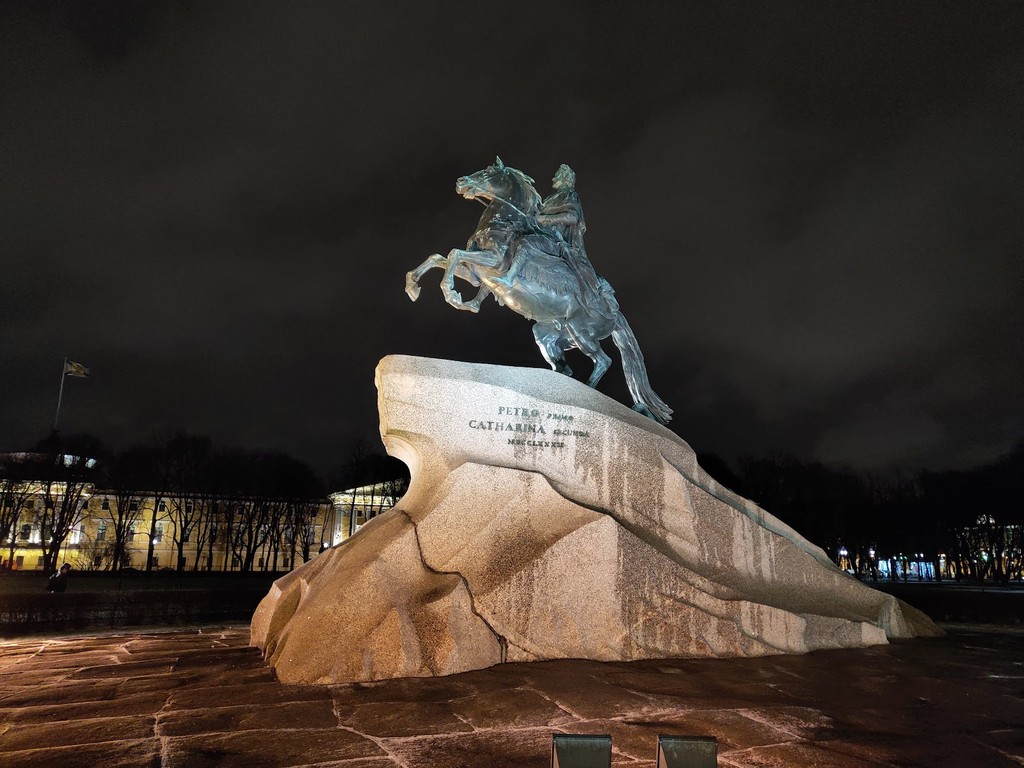
Senate Square (Decembrists' Square) (Source: Google Maps)
Senate Square, also known as Decembrists' Square, is a significant historical site in Saint Petersburg, located adjacent to the Bronze Horseman. This square has been the backdrop for many pivotal events in Russian history, particularly the Decembrist revolt in 1825, where a group of noble officers attempted to overthrow the autocratic rule of Tsar Nicholas I. The square features the Senate and Synod buildings, remarkable examples of neoclassical architecture, and serves as a gathering place for various political movements and public demonstrations, embodying the spirit of civic engagement and resistance.
Saint Isaac's Cathedral
Continue to Saint Isaac's Cathedral, a masterpiece of Russian architecture with its magnificent dome and opulent interiors, offering breathtaking views of the city from its colonnade.
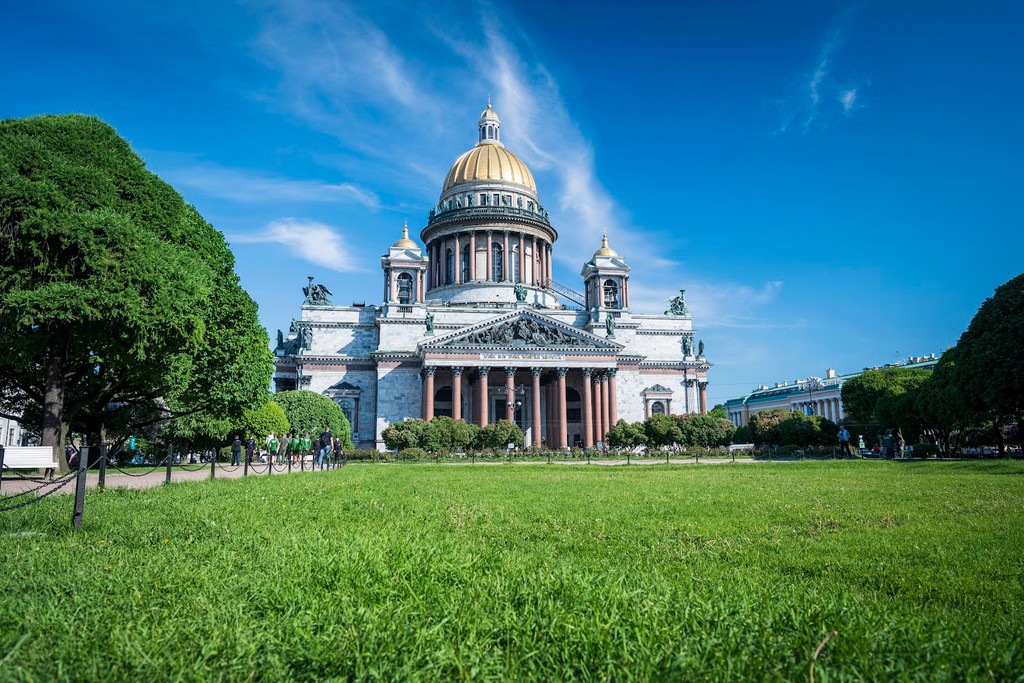
Saint Isaac's Cathedral (Source: Google Maps)
Saint Isaac's Cathedral is one of the most magnificent examples of Russian architecture, renowned for its monumental dome and lavish interiors. Completed in the 19th century, this cathedral was designed by the French architect Auguste de Montferrand and is notable for its stunning mosaics, intricate iconography, and impressive colonnade that offers panoramic views of the city. As the largest cathedral in Saint Petersburg, it has served various purposes throughout its history, including a museum and a place of worship. Its architectural grandeur and artistic richness make it a must-visit landmark, reflecting the city’s cultural and spiritual heritage.
State Hermitage Museum
Just a short walk from Palace Square, delve into one of the world's largest and most prestigious museums, showcasing an extensive collection of art and culture spanning centuries.
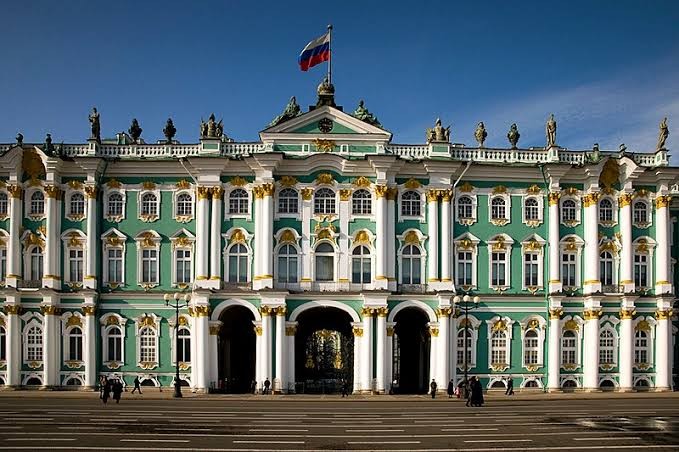
State Hermitage Museum (Source: Google Maps)
The State Hermitage Museum, located near Palace Square, is one of the world's largest and most prestigious museums, housing an extensive collection of art and cultural artifacts. Founded in 1764 by Catherine the Great, the museum showcases over three million items, including masterpieces by renowned artists such as Rembrandt, Michelangelo, and Van Gogh. The museum complex consists of several historic buildings, with the Winter Palace being the most famous. Visitors can explore vast galleries, opulent interiors, and exhibitions that span centuries, making the Hermitage a cornerstone of Saint Petersburg's cultural landscape.
Peter and Paul Fortress
Cross the Neva River to reach the Peter and Paul Fortress, the original citadel of Saint Petersburg and the burial site of Russian tsars.
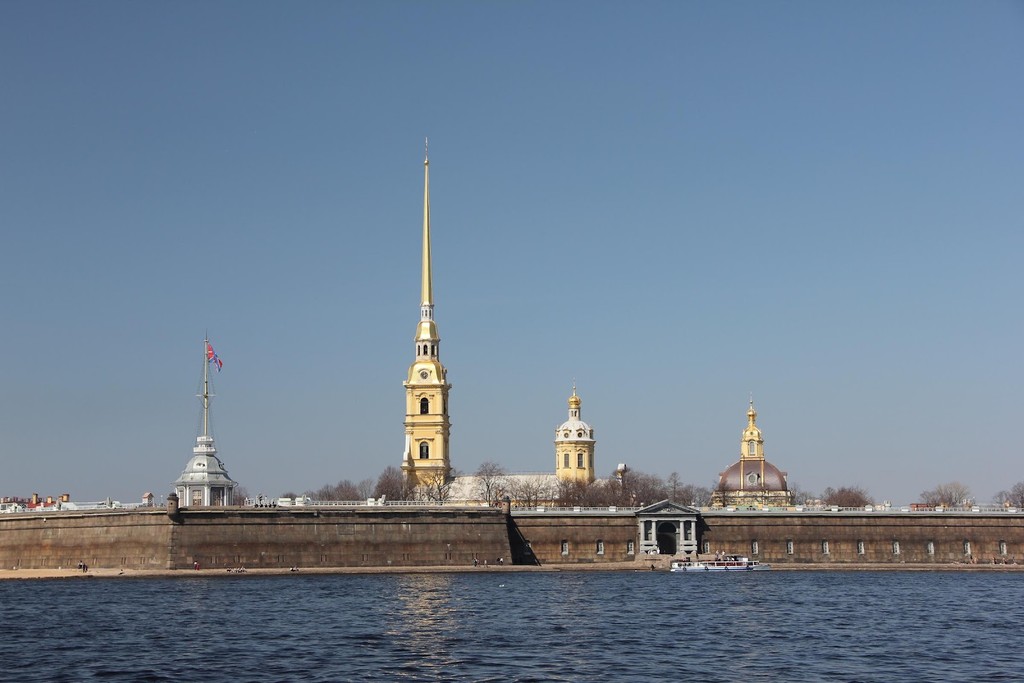
Peter and Paul Fortress (Source: Google Maps)
The Peter and Paul Fortress, situated on Zayachy Island, is the original citadel of Saint Petersburg and holds great historical significance. Founded by Peter the Great in 1703, the fortress was designed to protect the city from naval attacks. It features impressive bastions and a striking cathedral, which serves as the burial site for many Russian tsars. The cathedral, with its distinctive golden spire, is a symbol of the city and offers a glimpse into Russia's imperial past. The fortress has also played various roles throughout its history, including serving as a military base and a prison, making it a fascinating site to explore.
Trinity Bridge
Walk along the banks of the Neva to the elegant Trinity Bridge, offering picturesque views of the river and cityscape, particularly stunning at sunset.
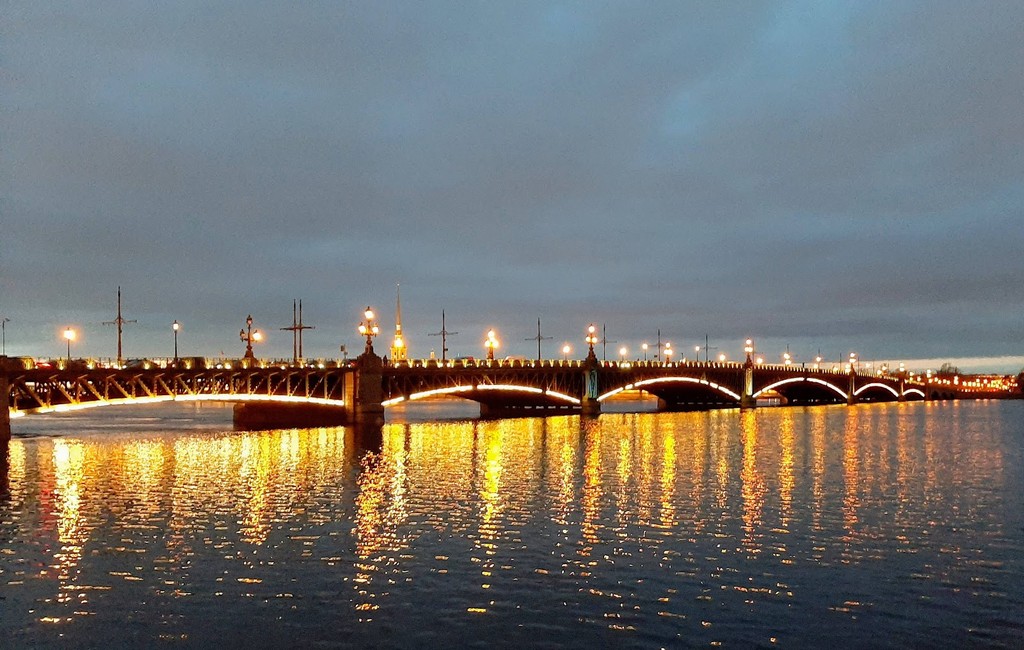
Trinity Bridge (Source: Google Maps)
Trinity Bridge, an elegant structure spanning the Neva River, is celebrated for its stunning views and architectural beauty. Completed in 1903, the bridge features intricate cast-iron details and is adorned with sculptures that embody the spirit of Saint Petersburg. It connects the city center with Vasilievsky Island and has become a popular spot for both locals and tourists, especially at sunset when the skyline is bathed in golden hues. The bridge symbolizes the city's connection to its waterways, which have played a crucial role in its history and development as a major port city.
Summer Garden
Conclude your tour at the Summer Garden, a serene and beautifully landscaped park that provides a peaceful retreat with its statues, fountains, and tree-lined paths.
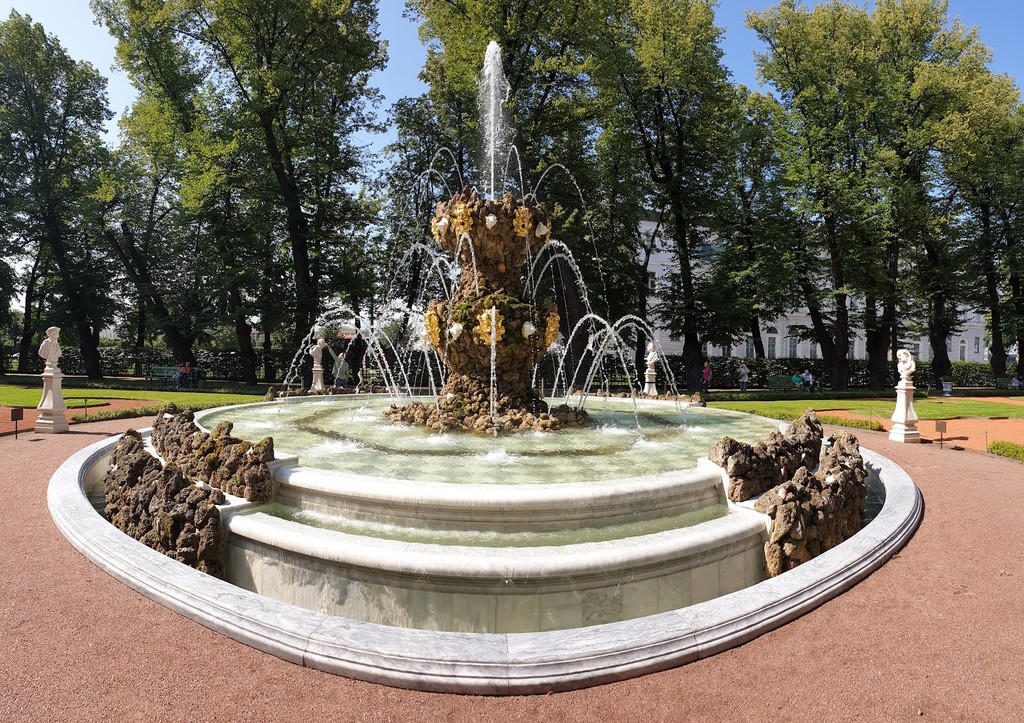
Summer Garden (Source: Google Maps)
The Summer Garden, one of Saint Petersburg's oldest and most beautiful parks, offers a serene retreat from the city's hustle and bustle. Established in the early 18th century, this meticulously landscaped garden features a variety of statues, fountains, and tree-lined paths, providing a picturesque setting for relaxation and reflection. The garden reflects the artistic vision of Peter the Great, who aimed to create a space that combined nature and art. Visitors can enjoy the tranquil atmosphere, explore the historical monuments, and appreciate the garden's role as a cultural landmark, making it a perfect conclusion to the walking tour.

Your travels, your rules.
Create your own Free Walking Tours.
Set your preferences, distances and anything you want to do or see.
Completely free, no payment required.